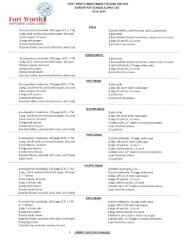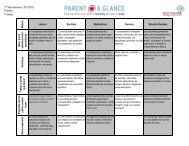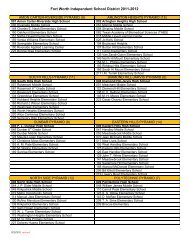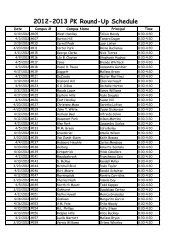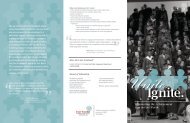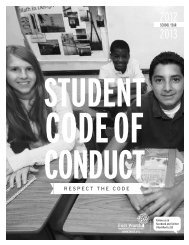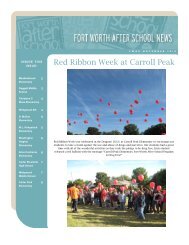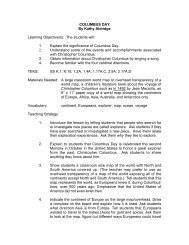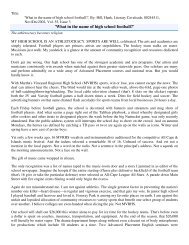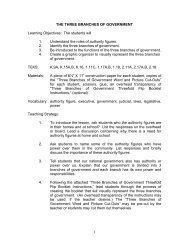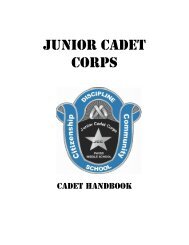Bulletin One 2012 2013 Final.pdf - Fort Worth ISD
Bulletin One 2012 2013 Final.pdf - Fort Worth ISD
Bulletin One 2012 2013 Final.pdf - Fort Worth ISD
You also want an ePaper? Increase the reach of your titles
YUMPU automatically turns print PDFs into web optimized ePapers that Google loves.
A. Routine and standard procedures should be used to clean up after a child has an accident or<br />
injury at school. Blood or other body fluids emanating from any child should be treated<br />
cautiously. Gloves should be worn when cleaning up blood spills and surfaces contaminated<br />
with them. These spills should be disinfected with a freshly made solution of household<br />
chlorine bleach in water (one-fourth [1/4] cup bleach to one [1] gallon of water) and persons<br />
coming in contact with them should wash their hands before and afterwards. Blood-soaked<br />
items or clothing stained with blood should be placed in leak-proof bags for further<br />
disposition. Similar procedures are recommended for dealing with vomitus and fecal or urinary<br />
incontinence in any child. Hand washing with soap and hot water after contact with a school<br />
child is routinely recommended if physical contact has been made with the child’s blood or<br />
body fluids, including saliva.<br />
B. Rugs which are contaminated by body fluids may be cleaned by applying a sanitary absorbent<br />
agent. Allow the agent to dry according to the directions; then vacuum. If needed,<br />
mechanically remove with a dust pan and broom; then apply rug shampoo (containing a<br />
germicidal detergent) with a brush and re-vacuum. Counters, mats, floors, etc., that are<br />
contaminated with body fluids must be cleaned after the spill of the body fluid and again at the<br />
end of the day with soap and water and rinsed with the appropriate disinfectant.<br />
C. Maintenance responsibilities should include daily cleaning with bleach/germicide in areas<br />
where contact with body fluids is likely (such as the health room, health room toilet(s), sink(s),<br />
student and staff lavatories, etc.). Plastic bags should also be changed daily and disposed of<br />
routinely; disposable gloves should be worn.<br />
3.9.II Cleaning of Hard Surfaces:<br />
A. Remove soil surface, then apply disinfectant. (Sodium hypochlorite one-fourth [1/4] cup to<br />
one [1] gallon of water or any FW<strong>ISD</strong> approved disinfectant.)<br />
B. Mops should be soaked in the disinfectant after use, then washed in hot water prior to rinsing.<br />
Gloves should be worn.<br />
C. Disposable items should be double bagged and placed in trash receptacle.<br />
D. Non-disposable equipment (dust pans, buckets) should be rinsed thoroughly in the disinfectant.<br />
E. Discard used solution promptly in drain pipe, rinse pail or container.<br />
F. Gloves should be removed when all clean up is completed and placed in double trash bag.<br />
Wash hands thoroughly before and after using gloves.<br />
3.9.III Additional Information<br />
A. In many instances, unanticipated skin contact with body fluids may occur in situations where<br />
gloves or some type of barrier (handkerchief, paper towel, etc.) may be immediately<br />
unavailable (e.g., a runny nose, applying pressure to a bleeding injury outside the classroom,<br />
helping a child in the restroom). In these instances, hands and other affected skin areas of all<br />
exposed persons should be routinely washed with soap and water after direct contact has<br />
12-13 SY <strong>Bulletin</strong> Number <strong>One</strong> 51 Revised: 10/9/<strong>2012</strong>





